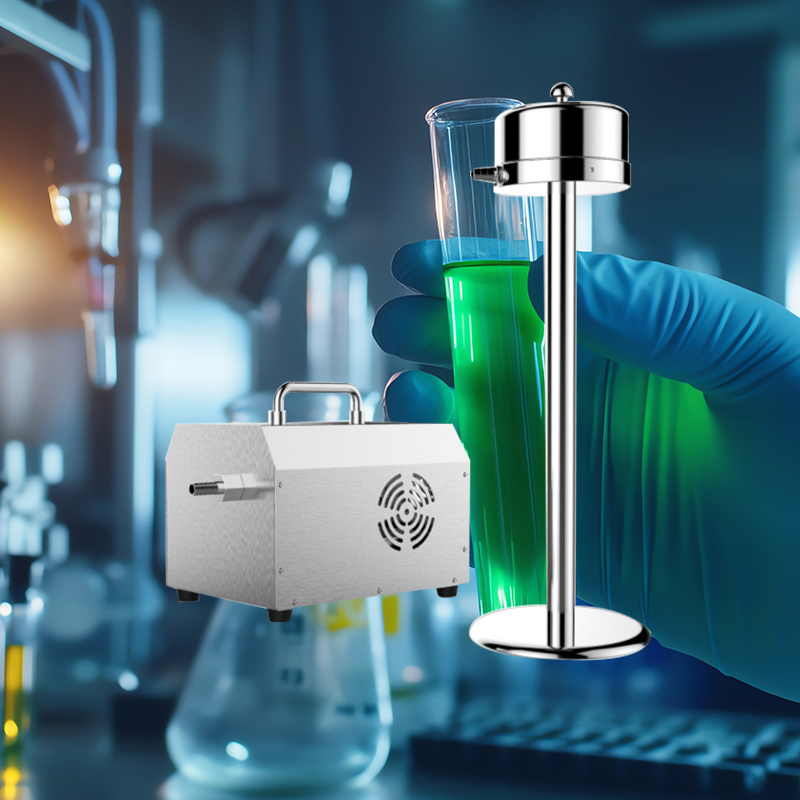Background of Using Online Airborne Microbe Samplers in Food Factories
In the food industry, food safety has always been the core lifeline for the survival and development of enterprises, and microbial contamination in the production environment is one of the key hidden risks threatening food safety. As consumers’ requirements for food quality continue to rise and national food safety supervision standards become increasingly stringent, food factories have put forward higher demands for monitoring the concentration of airborne microbes in key areas such as production workshops, aseptic filling zones, and raw material temporary storage rooms. They not only need to accurately grasp the distribution of microbes but also realize real-time and continuous dynamic monitoring to quickly respond to potential contamination risks.
The traditional method of airborne microbe sampling is mostly manual offline sampling, where staff regularly carry sampling equipment into the production area to collect samples, which are then sent to the laboratory for cultivation and analysis. This method has obvious limitations: on the one hand, the low sampling frequency and long interval make it difficult to capture the instantaneous fluctuations of microbial concentration during the production process, possibly missing the key nodes when contamination occurs; on the other hand, factors such as the entry and exit of personnel during manual sampling and the standardization of operations may instead cause secondary interference to the clean environment, affecting the accuracy of monitoring results. In addition, offline sampling usually takes several days from sample collection to the issuance of test reports. Once excessive contamination is detected, it is impossible to trace the source of contamination in a timely manner and take emergency control measures, which may lead to quality risks for the produced food batches, even triggering large-scale recalls and bringing huge economic losses and brand reputation damage to enterprises.
Hardware Equipment
OSEN-FY6014 Online Airborne Microbe Sampler
The OSEN-FY6014 Online Airborne Microbe Sampler is a multi-hole suction-type sampler used in online monitoring systems. It consists of two parts: a sampling head and an independent pump.
The entire sampling head is made of 304 stainless steel with a mirror-finished surface, featuring a high-end and elegant appearance.
It adopts a 218-mesh (pore size 0.5mm) micro-hole design, which reduces bacterial overlap and minimizes errors in microbial counting.
The sampling head bracket is thick and stable, preventing the petri dish from shaking during sampling (which could lead to counting errors).
The independent pump body is also made of 304 stainless steel, complying with GMP specifications. It has a built-in long-life fan that can work continuously for more than 10,000 hours, with low vibration and low noise. At the same time, it uses a precision digital flow sensor to monitor the sampling flow in real time. Through an intelligent algorithm, it achieves the function of negative feedback self-regulation of flow, ensuring the stability of the sampling flow without being disturbed by the environment, thus guaranteeing the accuracy of sampling results.

Technical Parameters
Name: Online Airborne Microbe Sampler (with Independent Pump)
Model: OSEN-FY6014
Sampling Flow Rate: 50L/min ±5% (with pipe length ≤10m)
Sampling Volume: 1-6000L (configurable)
Impaction Velocity: 10.8m/s
Sampling Head: 218-mesh with 0.5mm pores, which reduces bacterial overlap and minimizes errors in microbial counting
Air Pump Requirement: External independent pump, featuring low vibration and low noise
Display Requirement: External display screen (optional), used for displaying data or debugging parameters
Power Supply Requirement: AC220V/50Hz
Executive Standards: ISO14698-1/2; GB/T16293-2010
Petri Dish: Standard universal petri dish with dimensions of φ90*15mm
Communication Method: RS485 @ ModbusRTU Protocol
Material Requirement:
Independent Pump: Made of 304 stainless steel with wire-drawing electrolysis surface treatment
Sampling Head: Made of 304 stainless steel with mirror-finished surface
Keyword:


